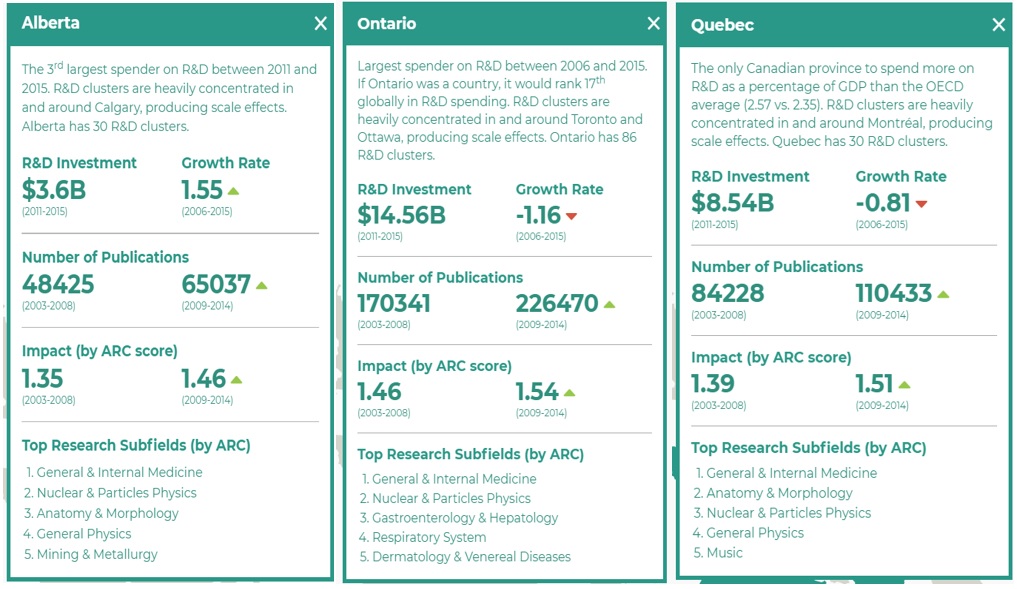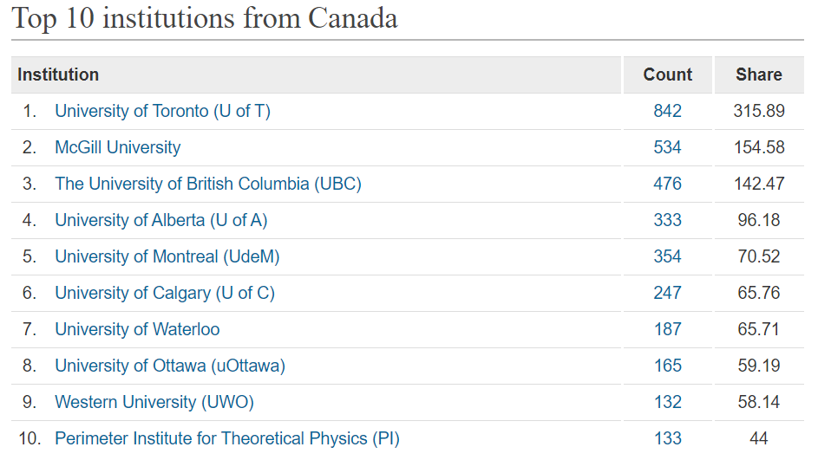Since coming into office in 2015, prime minister Justin Trudeau has injected money to revitalise research and innovation, following ten years of cuts to the science budget. Now the country is riding high in key technologies

Justin Trudeau’s government has been praised for its focus on research and innovation since coming to office in November 2015, boosting funding for research by C$9.4 billion, launching five innovation superclusters for R&D in artificial intelligence (AI) and other fields, and reinstating the chief scientific adviser position.
Last year’s re-election of the left-leaning Liberal Party was cheered by scientists, who feared a win for the Conservatives would undo the progress made over the past four years. Trudeau’s predecessor, Conservative Stephen Harper, hacked science budgets when he came to office in 2006.
The world’s tenth-largest economy, Canada has since revitalised its research policy. In 2017, the government launched its Innovation and Skills Plan, followed by a five-year plan to invest C$4 billion in science, starting in 2018. Of this amount, C$1.2 billion went to basic research, “the single largest investment in investigator-led fundamental research in Canadian history” said minister of finance, Bill Morneau.
After years of lobbying by researchers, the government reinstated the chief science adviser position in 2017, nearly a decade after it was axed. Current holder of the office is Mona Nemer, a specialist in the genetics of heart disease. Her mandate is to advise the government on R&D policy, support evidence-based decision-making, and promote science communication to the public.
Scientists responded warmly to the research uplift and an overall change in tone. Now some are wondering is the agenda done, because despite being re-elected last October, Trudeau’s positive track record on science is under some threat.
A cabinet reshuffle in November saw science minister Kirsty Duncan moved to be deputy house leader and the science portfolio hived off to the newly rebranded Ministry of Innovation, Science and Industry. Critics say the loss of a dedicated science minister signals a reduced voice for the research agenda around the government’s table.
Navdeep Bains, who leads the new innovation ministry denies the claim science has taken a back seat. “Science and research remains at the heart of our decision-making”, Bains said last December at the annual awards of the Canadian Social Sciences and Humanities Research Council. He added that science is also “at the heart of innovation.”
But the government’s 2019 funding plan couldn’t repeat the trick of 2018: it contained a more modest injection for basic sciences, C$459 million.
Following the recent election, Trudeau’s Liberals have been reduced to a minority government, meaning they will struggle to pass budgets and maintain confidence in a divided country. Many Canadians expect to be back in a polling booth before too long.
Rise of the innovators
If the government’s science agenda is having a wobble, the same can’t be said for innovation.
Canadian strengths are varied, including computer systems design, communications equipment manufacturing, aerospace products and parts manufacturing.
Long-term investment in computer science and areas like neural networks research, has seen the country take a leadership position in AI.
Low oil prices have hurt Canada’s oil-producing provinces, but sectors like aerospace are booming, contributing over C$25 billion in GDP and 213,000 jobs to the economy in 2018. Canada ranks in the top three globally for the production of civil simulators, turboprop and helicopter engines, business jets, and regional aircraft.
The government in 2017 launched a series of initiatives with the goal of “building a nation of innovators”. The main plank of this strategy is C$950 million for a string of new innovation superclusters to help companies with technology commercialisation.
The five superclusters, each with a distinct focus on a key economic sector, are designed to encourage companies of all sizes to work together to boost high-growth sectors.
Like Europe, Canada struggles to grow globally competitive tech companies, and foreign players capture some of the country’s most promising start-ups.
The five innovation hubs are spaced throughout the country. There is the advanced manufacturing group, based in Ontario, the ocean supercluster in the Atlantic provinces, AI in Quebec, protein industries in the Prairies, and digital technology in British Columbia.
Bains hopes the clusters will generate about 50,000 jobs and C$50 billion to the economy.
The policy is an acknowledgement that Canada needs to catch-up with the likes of Germany, where support for spin-outs is well established through the country’s network of Fraunhofer Institutes. The superclusters are also partly inspired by the UK’s Catapult centres, which began in 2011 to help small science and technology firms that might otherwise have struggled due to a lack of funding, expertise or facilities.

Leading lights
Canada is a frontrunner in AI. For investment, output and impact, Ontario and Quebec are the buzziest places to do research. Montreal has the highest concentration of researchers and students of deep learning in the world, while Toronto has the highest concentration of AI start-ups in the world. Apple, Facebook, Google, Uber and Huawei are setting up shop in the big cities of Canada to take advantage of the deep talent pools.
Besides AI, Canada is well positioned in climate science. The country’s proximity to the Arctic means it aspires to be a leader in Arctic science, and in climate, atmospheric and ozone research globally.
Canadian climate scientists have pioneered research in atmospheric sciences, meteorology and oceanography. In 1976, the Canadian Meteorological Centre in Montreal launched the first global computer weather modelling system in the world.
More recently, in 2009, Canada created the world’s first regional-scale underwater ocean observatory connected to the internet — called Neptune — which is capable of monitoring ocean-atmosphere interactions.
Warmer embrace with Europe
The government is opening the country up to more foreign collaboration with the launch of the New Frontiers in Research Fund. The programme, which could reach C$130 million in the 2022-23 fiscal year, is to fund inter-disciplinary research that is “out of the box” with a strong international dimension.
Canada is also pursuing greater research collaboration with the EU as a natural follow-on to the Canada-EU trade agreement, and a counterbalance to increasingly difficult relations with the US under president Donald Trump. A relationship that once seemed unshakable now appears vulnerable.
Canada is among eight countries with which the European Commission has said it would like to discuss associate membership in the proposed seven-year, €94.1 billion Horizon Europe programme – and, along with Japan, Canada appears most keen to take up the offer.
Already, Ottawa funds many European researchers in projects with Canadian researchers, and it indirectly subsidises Canadians participating in 66 Horizon 2020 research projects.
The hotspots

Universities in demand
Incoming foreign students to Canadian universities are undoubtedly there to take advantage of the relatively low tuition fees and cheaper health insurance than across the border in the US.
Canada’s international student population grew by 92 per cent from 2008 to 2015, reaching more than 350,000, according to the Canadian Bureau for International Education.
Ease of immigration might be another compelling reason, but the quality of education is a draw too – with 26 universities on the QS University Ranking, and three scoring in the top 100.
The highest ranked institution is the University of Toronto, number 29 in the 2020 ranking, one place down from the previous year. Among its alumni are five prime ministers and 10 Nobel laureates. Toronto is followed by McGill University (35th) and the University of British Colombia (51st).
Canada is ranked fourth among the OECD group of countries for research impact, and hosts some of the most highly cited researchers and publications in the world.






 A unique international forum for public research organisations and companies to connect their external engagement with strategic interests around their R&D system.
A unique international forum for public research organisations and companies to connect their external engagement with strategic interests around their R&D system.